Volume 10, Issue 3
Displaying 1-10 of 10 articles from this issue
- |<
- <
- 1
- >
- >|
-
1992 Volume 10 Issue 3 Pages 209-214
Published: November 30, 1992
Released on J-STAGE: January 25, 2011
Download PDF (721K) -
1992 Volume 10 Issue 3 Pages 215-223
Published: November 30, 1992
Released on J-STAGE: January 25, 2011
Download PDF (1152K) -
1992 Volume 10 Issue 3 Pages 224-232
Published: November 30, 1992
Released on J-STAGE: January 25, 2011
Download PDF (10281K) -
1992 Volume 10 Issue 3 Pages 233-240
Published: November 30, 1992
Released on J-STAGE: January 25, 2011
Download PDF (1031K) -
1992 Volume 10 Issue 3 Pages 249-259
Published: November 30, 1992
Released on J-STAGE: January 25, 2011
Download PDF (10504K) -
1992 Volume 10 Issue 3 Pages 260-267
Published: November 30, 1992
Released on J-STAGE: January 25, 2011
Download PDF (892K) -
1992 Volume 10 Issue 3 Pages 268-278
Published: November 30, 1992
Released on J-STAGE: January 25, 2011
Download PDF (1523K) -
1992 Volume 10 Issue 3 Pages 279-284
Published: November 30, 1992
Released on J-STAGE: January 25, 2011
Download PDF (683K) -
1992 Volume 10 Issue 3 Pages 285-294
Published: November 30, 1992
Released on J-STAGE: January 25, 2011
Download PDF (3852K) -
1992 Volume 10 Issue 3 Pages 295-302
Published: November 30, 1992
Released on J-STAGE: January 25, 2011
Download PDF (1075K)
- |<
- <
- 1
- >
- >|
